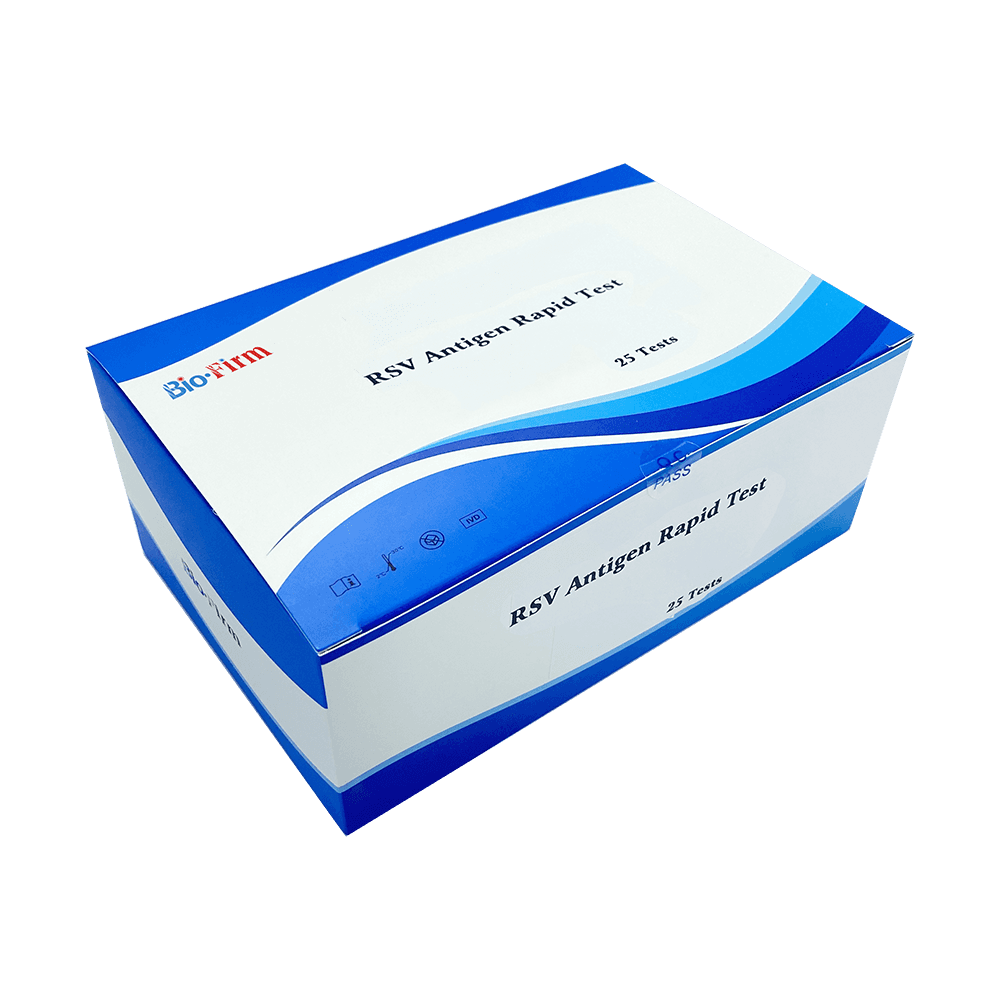Jul 01,2022
The biochemical basis for the detection of RSV antigens in a rapid test involves the specific interaction between viral antigens and antibodies, as well as the subsequent generation of a detectable signal. Here is a detailed explanation of this process:
Components of the Rapid Test
Antibodies:
Capture Antibodies: These are immobilized on a solid phase, such as a test strip or microplate. They are designed to specifically bind to RSV antigens present in the sample.
Detection Antibodies: These are labeled with a fluorescent, colorimetric, or chemiluminescent marker. They also bind specifically to the RSV antigens but at a different epitope than the capture antibodies.
RSV Antigens:
These are proteins or glycoproteins expressed by the RSV virus, commonly the fusion (F) protein or the nucleoprotein (N). These antigens are present in clinical samples such as nasal or throat swabs from infected individuals.
Detection Process
Sample Application:
The clinical sample containing RSV antigens is applied to the test. This sample can be a nasal swab, throat swab, or nasopharyngeal aspirate.
Binding to Capture Antibodies:
The RSV antigens in the sample bind to the capture antibodies that are immobilized on the solid phase. This initial binding step is crucial for the subsequent detection process.

Formation of Antigen-Antibody Complex:
The labeled detection antibodies bind to the RSV antigens, forming a sandwich complex: the capture antibody-RSV antigen-detection antibody complex.
Signal Generation:
The label on the detection antibodies generates a detectable signal. This label can be:
Fluorescent: Produces a signal when exposed to a specific wavelength of light.
Colorimetric: Produces a visible color change that can be seen with the naked eye.
Chemiluminescent: Produces light as a result of a chemical reaction.
Signal Detection:
The generated signal is then detected and measured. In the case of a colorimetric label, the result can often be interpreted visually (e.g., a color change on a test strip). For fluorescent or chemiluminescent labels, a reader or detector may be used to quantify the signal.
Biochemical Interactions
Antibody-Antigen Binding:
The specificity of the test relies on the high affinity and specificity of the antibodies for the RSV antigens. These interactions are typically based on non-covalent bonds, such as hydrogen bonds, ionic bonds, van der Waals forces, and hydrophobic interactions.
Epitope Recognition:
The antibodies are designed to recognize specific epitopes on the RSV antigens. This ensures that the test can distinguish RSV from other pathogens that may be present in the sample.
Ensuring Specificity and Sensitivity
Monoclonal Antibodies:
The use of monoclonal antibodies, which are identical and recognize a single epitope, enhances the specificity of the test. This reduces cross-reactivity with other proteins or pathogens.
Optimized Binding Conditions:
The conditions under which the antigen-antibody binding occurs (e.g., pH, temperature, ionic strength) are carefully optimized to maximize binding efficiency and minimize non-specific interactions.
The biochemical basis for the detection of RSV antigen rapid test is centered on the specific and high-affinity binding of RSV antigens by antibodies, forming a detectable complex that generates a signal proportional to the amount of antigen present. This process ensures that the test is both sensitive and specific, enabling rapid and accurate detection of RSV infections.



 Español
Español
 Français
Français
 Deutsch
Deutsch
 عربى
عربى








